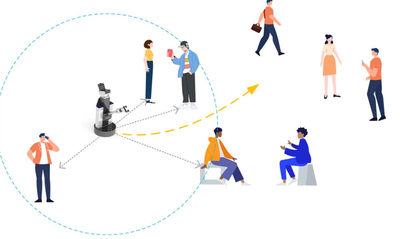Enhanced Spatial Attention Graph for Motion Planning in Crowded, Partially Observable Environments
Authors:
W. Shi, Y. Zhou, X. Zeng, S. Li, M. BennewitzType:
Conference ProceedingPublished in:
IEEE International Conference on Robotics & Automation (ICRA)Year:
2022Related Projects:
Anticipating Human BehaviorLinks:
BibTex String
@InProceedings{Shi22icra,
author = {W. Shi and Y. Zhou and X. Zeng and S. Li and M. Bennewitz.},
title = {Enhanced Spatial Attention Graph for Motion Planning in Crowded, Partially Observable Environments},
booktitle = {Proc.~of the IEEE International Conference on Robotics \& Automation (ICRA)},
year = 2022
}

Abstract:
Collision-free navigation while moving amongst static and dynamic obstacles with a limited sensor range is still a great challenge for modern mobile robots. Therefore, the ability to avoid collisions with obstacles in crowded, partially observable environments is one of the most important indicators to measure the navigation performance of a mobile robot. In this paper, we propose a novel deep reinforcement learning architecture that combines a spatial graph and attention rea- soning to tackle this problem. We take the relative positions and velocities of observed humans as nodes of the spatial graph and robot-human pairs as nodes of the attention graph to capture the spatial relations between the robot and the humans. In this way, our approach enhances the modeling of the relationship between the moving robot, static obstacles, and the people in the surrounding. As a result, our proposed navigation framework significantly outperforms state-of-the-art approaches [1], [2] in crowded scenarios when the robot has only a limited sensor range in terms of a reduced collision rate. Furthermore, we realize a seriously decreased training time by applying parallel Double Deep Q-Learning.

